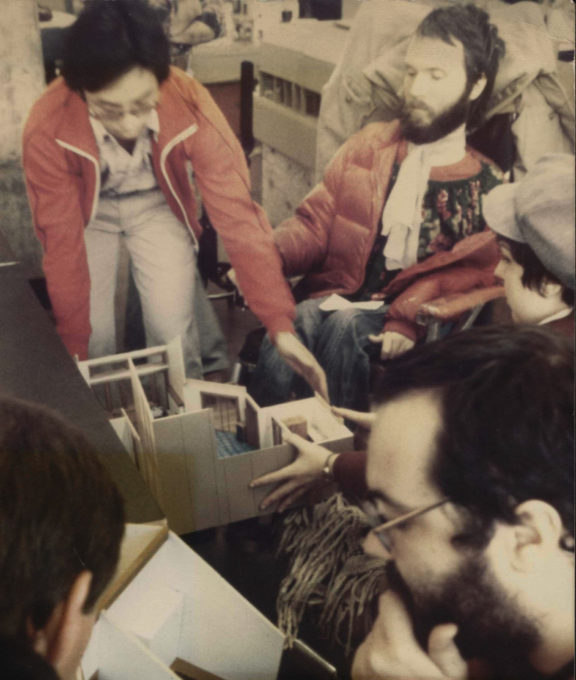In 1972, Raymond Lifchez began teaching the undergraduate studio Arch101: Social and Behavioral Factors in Design. He invited members of the campus and citywide disabled community to act as design consultants so that students could incorporate the needs, desires, and livelihood of disabled people into their designs.
In this image, consultant Peter Trier (top right) audits a student’s architectural work. Trier, who came to Berkeley in 1973 as a twenty-six year-old PhD student, coordinated the roster of consultants for the course. Consultants were either disabled since birth or disabled for a substantial period of time and had devised methods, habits, and tools for living independently. Consultants worked with up to 100 students and played a substantial role in teaching the studio. You can really tell that the students were eager to listen and hear from the design consultant’s critique.
The project encouraged able-bodied students to holistically account for the fullness of a disabled person’s life, combat ableist stereotypes, and challenge their biases about people from different backgrounds. Ultimately, it embodied the groundbreaking disabled user-led design ethos coming out America’s “crip” capital. By emphasizing the “expert knowledge” tied to having a physical disability or limitation, the studio sought to reform environmental design research methods and challenged architectural assumptions about life with a disability.
